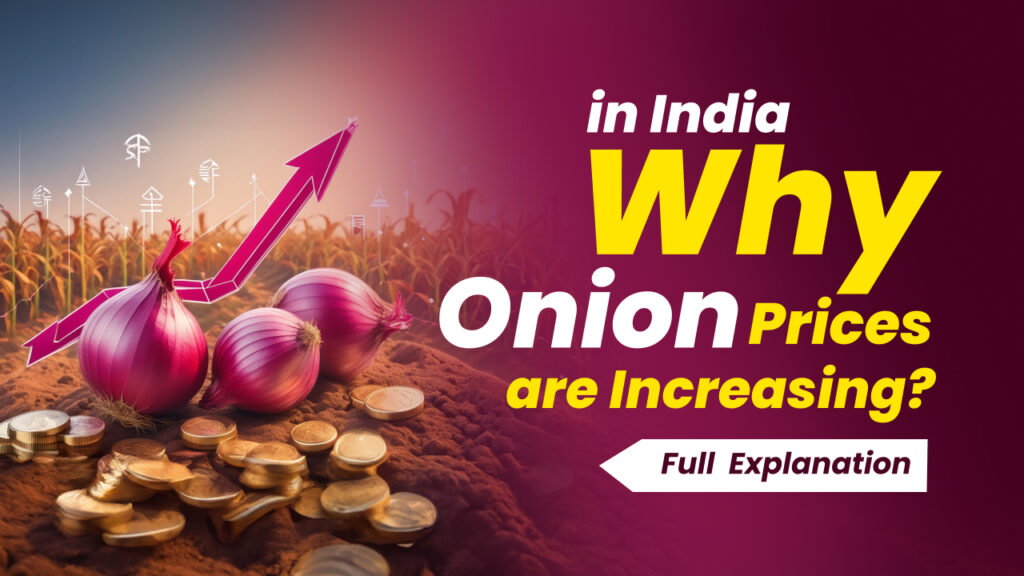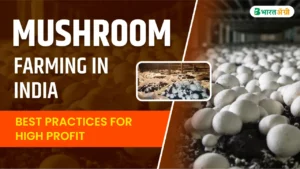
Onion prices in India have shot up dramatically over the past two weeks, rising by 30-50%. This spike is due to increased demand ahead of Eid-al-Adha and traders holding onto stock. In key markets like Nashik, and Maharashtra, the wholesale price of onions has climbed from Rs 17 to Rs 26 per kg. This article examines why onion prices are increasing, the impact on different groups, and what the government is doing about it.
Impact of 30% Rabi Harvest Drop on Onion Prices
The Rabi season’s onion harvest dropped by 30%, largely due to erratic weather. Unseasonal rains and extreme weather events disrupted the supply chain, causing a significant onion price increase. This reduced yield created a supply-demand gap, pushing up onion rates today across India.
Government’s Role in the Onion Price Surge
The government’s response to the onion price rise has been mixed. One major issue is the shortfall in the onion buffer stock, which is below the target for FY25. This has made it difficult to stabilize prices through stock releases. Efforts to curb hoarding and regulate stockpiling by traders have had limited success, allowing some to manipulate prices.
Economic Implications of Lifting the Export Ban
Lifting the export ban on onions is intended to help farmers by opening up international markets. However, this move has significant economic implications. Increased international demand could lead to further domestic price increases if not carefully managed. Balancing exports and domestic needs is crucial to prevent more spikes in onion prices.
Future Outlook for the Onion Market
The future of the onion market largely depends on weather and policy measures. Continued bad weather could keep production unstable, leading to more price volatility. Strategic government interventions, like improving storage facilities and better forecasting, are essential. Long-term solutions include developing resilient onion varieties and promoting crop diversification to reduce dependency on onions alone.
What Can Consumers Do About It?
Different people will be affected differently by increasing onion prices in India, majorly these are the producers and consumers. So, if you’re a farmer or a consumer, let us look at the right actionable for you.
Tips for Farmers:
- Diversify Crops: Plant various crops to reduce the risk of price volatility.
- Use Government Schemes: Utilize subsidies and support schemes to cushion the impact of price fluctuations.
Tips for Consumers:
- Bulk Purchase and Storage: Buy onions in bulk during low-price periods and store them properly to avoid paying high prices later.
- Substitute Ingredients: Use alternatives like leeks or shallots when onion prices are high.
- Support Local Farmers: Purchase directly from local markets to potentially get better prices and support the community.
Onion Storage Techniques at Home
- Cool, Dry Place: Store onions in a cool, dry, and well-ventilated area to keep them fresh longer.
- Avoid Refrigeration: Do not refrigerate onions as moisture can lead to spoilage. Instead, keep them in mesh bags or baskets.
- Separate from Potatoes: Store onions away from potatoes to prevent them from spoiling faster.
Are We Going to Witness Price Hikes in Other Vegetables?
Similar factors that affect onion prices, like weather and supply chain issues, could lead to price hikes in other vegetables. Crops such as tomatoes, potatoes, and leafy greens may also see price increases. Keeping an eye on weather patterns and agricultural policies will help predict and manage these potential hikes.
Conclusion
The recent onion price increase in India is due to a combination of poor weather, market dynamics, and policy challenges. Immediate measures are needed to control prices, but long-term strategies are also essential to stabilize the market. By adopting certain practices, consumers and farmers can better manage the impact of price volatility.
FAQs
Onion prices have surged due to a reduced harvest, traders hoarding stock, and bad weather affecting supply.
The government is working to increase buffer stocks, regulate market practices, and has lifted the export ban to balance supply.
Consumers can buy in bulk during low-price periods, use substitutes like leeks, and support local farmers.
Yes, vegetables like tomatoes, potatoes, and leafy greens could also see price increases due to similar conditions.




